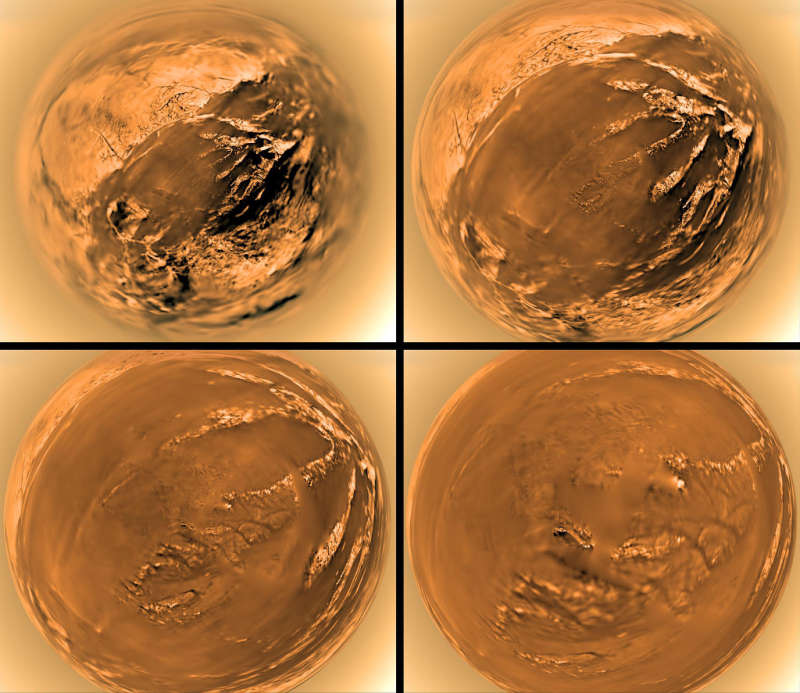Huygens Lands on Titan

Explanation:
Delivered by Saturn-bound Cassini, ESA's Huygens probe
touched down on the ringed planet's largest moon
Titan,
ten years ago on January 14, 2005.
These panels show fisheye images made during its
slow descent
by parachute through Titan's dense atmosphere.
Taken by the probe's descent imager/spectral radiometer instrument they
range in altitude from 6 kilometers (upper left) to 0.2 kilometers
(lower right) above the moon's surprisingly Earth-like surface
of dark channels, floodplains, and bright ridges.
But at temperatures near -290 degrees C, the liquids
flowing across Titan's surface are methane and ethane, hydrocarbons
rather than water.
After making the
most distant landing
for a spacecraft from Earth, Huygens transmitted data for more than an hour.
The Huygens data and a decade of exploration by Cassini have shown Titan to
be a
tantalizing world hosting a complex
chemistry of organic compounds, dynamic landforms, lakes, seas,
and a possible subsurface ocean of liquid water.
Authors & editors:
Robert Nemiroff
(MTU) &
Jerry Bonnell
(USRA)
NASA Web Site Statements, Warnings,
and Disclaimers
NASA Official: Jay Norris.
Specific
rights apply.
A service of:
LHEA at
NASA /
GSFC
& Michigan Tech. U.

